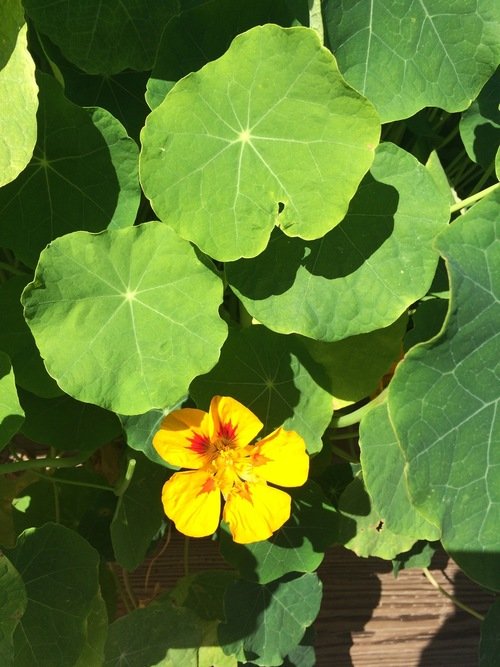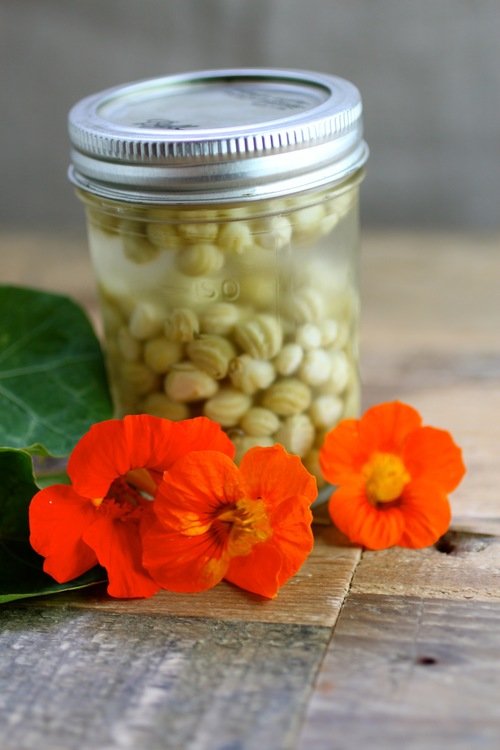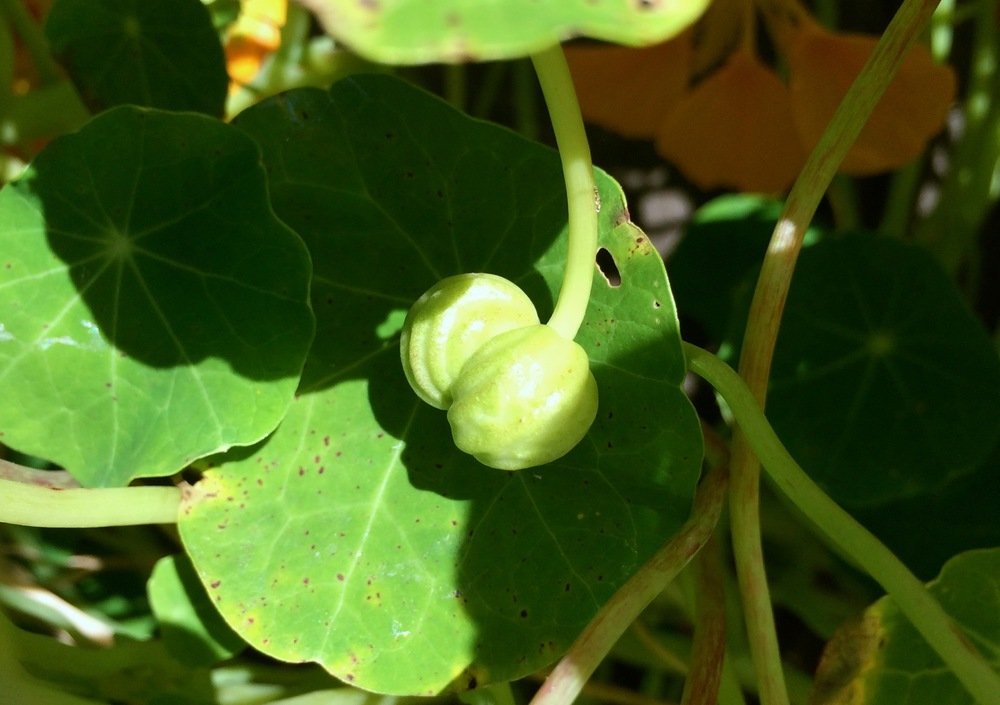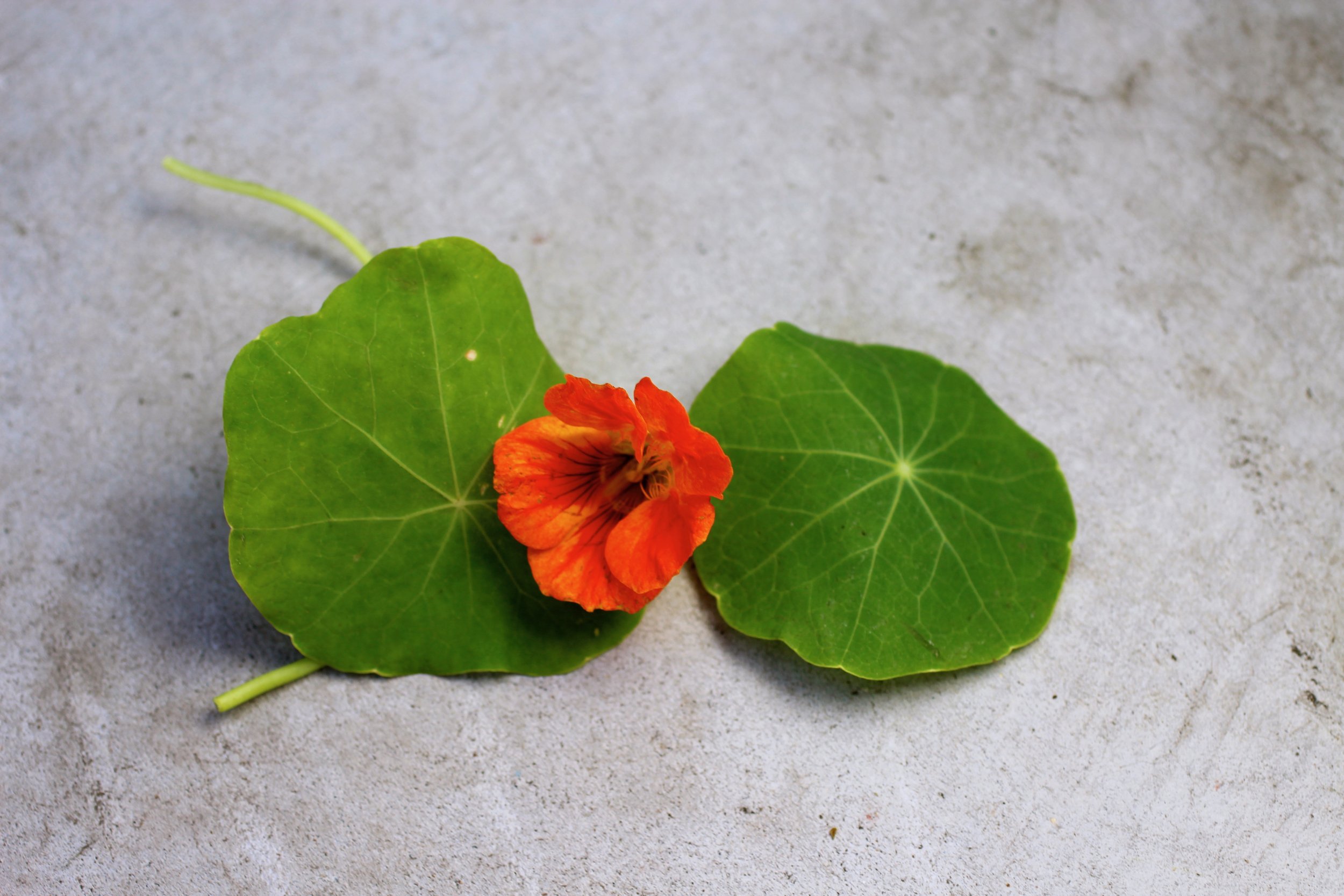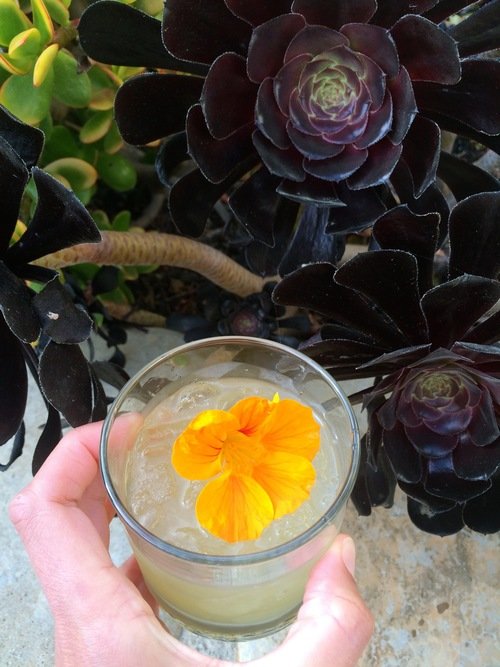California Capers
California Capers.
As I explore in a previous post, the nasturtium plant (Tropaeolum majus) has so much more going on than a pervasive vine with peppery bright flowers, including incredibly spicy leaves and (the subject of this post) pungent, clear-your-nasal-cavity seed pods. You want to pick the seed pods when they're young and green, as they toughen and get bitter with age (but are still edible). Try them raw - their wasabi-like flavor is so intense, it'll wake you right up! I like eating them as a snack, but as they are so intense a little goes a long way. By pickling them, you can preserve and enjoy these pearls of flavor for up to one year. As with most things in the culinary world, someone else has already done this and coined them "California Capers" - a designation I love and truly wish I'd created!
The nasturtium plant in all its glory.
Nasturtium seed pods stuck together in groups of three - these need to be separated before washing and preserving.
Don’t worry about sounding professional. Sound like you. There are over 1.5 billion websites out there, but your story is what’s going to separate this one from the rest. If you read the words back and don’t hear your own voice in your head, that’s a good sign you still have more work to do.
Be clear, be confident and don’t overthink it. The beauty of your story is that it’s going to continue to evolve and your site can evolve with it. Your goal should be to make it feel right for right now. Later will take care of itself. It always does.
I've tried making California capers a few ways, some ways more complex than others, but I find that I like the simple version from this site best, with a few alterations. If you find the caper pungency to be too strong, you can always submerge them in a salty brine for a few days (1/4 cup salt: 2 cups water). Pickled nasturtium pods work anywhere you'd use regular capers - they're amazing on bagels and lox (anything with smoked or preserved fish, really), pasta pomodoro, braised chicken, in tuna or egg salad, green salad, etc.
Makes 1 pint
1-1/3 cups young nasturtium seed pods
2 bay leaves
About 1-1/3 cups distilled white vinegar
2 teaspoons Kosher or sea salt
Separate seed pods that are stuck together - they are often joined in groups of three.
Soak seed pods in water to remove any dirt/debris, then drain and place in two sterilized half-pint jars along with 1 bay leaf per jar.
In a small saucepan over medium-high heat, bring the vinegar and salt to a simmer and stir until salt is dissolved. Pour hot vinegar mixture over seed pods, covering them completely.
Let the jars cool to room temperature before sealing with lids. Refrigerate for at least 24 hours before eating and enjoy for up to one year.
Nasturtium: So much more than a (pervasive) flower
Nasturtium mezcal margaritas: An impromptu preparation for an outdoor happy hour.
Nasturtium (Tropaeolum majus) grows everywhere - everywhere - in the Bay Area as well as many other parts of the country. It flourishes in parks, gardens, and along sidewalks pretty much year-round, except when it gets very cold or very dry. The plant is sprawling and iconic - even if you do not immediately know what I am talking about, you have probably seen nasturtium many times or perhaps tasted the flowers in a salad mix from the farmers' market or restaurant. The flowers are bright orange, yellow, or sometimes red with five petals on a single stem and leaves that look similar to lily pads, but thinner. The plant comes by way of South America and my guess is that it was transported here because it is so visually appealing, grows easily, and has a tasty, unique flavor.
What I love about the nasturtium plant is that with its mustard/radish/wasabi-like flavor and cheerfully spunky appearance, it is very approachable for even the biggest wild food skeptic (as long as said skeptic doesn't have an aversion to pungency). However, when you dig a little deeper, there are so many more possibilities than just using the fresh flower as a garnish or in salads. The leaves have a slightly thick, viscous quality to them, similar to okra, but I the sharp flavor cuts this a bit and the viscosity is helpful when you want to thicken a dish, such as a risotto or stew.
Freshly picked nasturtium seed pods
Sweet pea flowers in foreground, baby nasturtium leaves in background wrapping shrimp (wish I got a better photo of the nasturtium!), rhubarb broth.
My first close and consistent experience with nasturtium was when I worked in a restaurant that used the flower to garnish mezza platters (hummus, tapenade, etc.). Being me, I would often grab a bunch of the leftover stems and take a big bite for a peppery "jolt" to keep me going throughout the night. On the other (more calculated) end of the spectrum, in the past few years I have been using the flowers in cocktails and experimenting with the leaves (either fresh in a salad or lightly cooked) and seed pods (pickling them is amazing - check out this recipe for California capers) Baby nasturtium flowers even made their way to the Noma menu when I had the opportunity to eat there and nasturtium pesto is a regular staple on the ForageSF Wild Kitchen dinners, or at least it was the few times I helped out.



